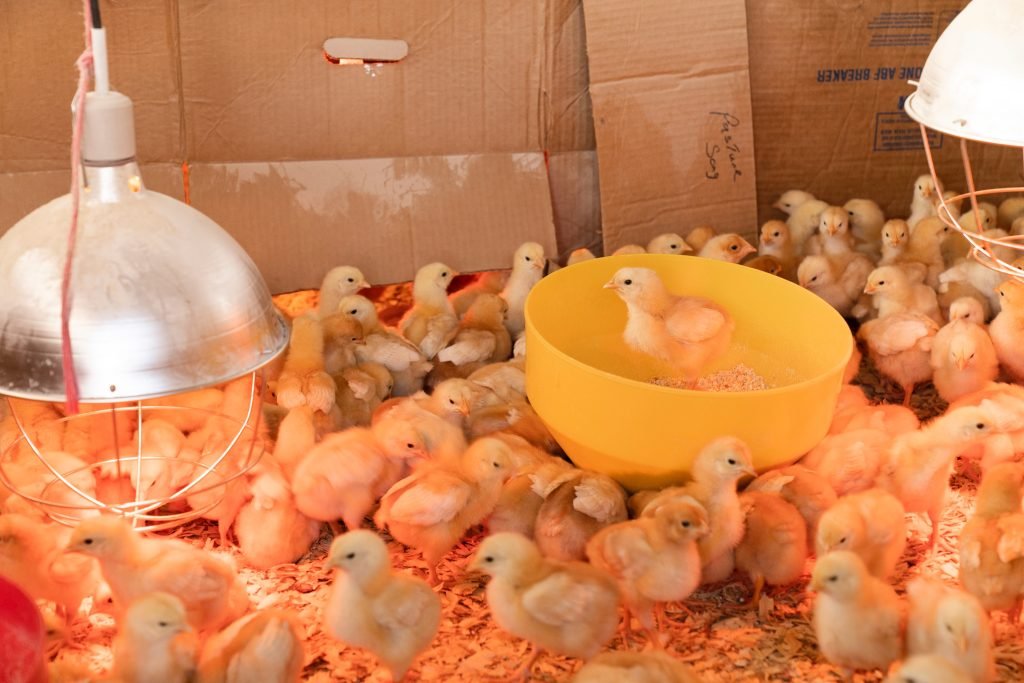In recent years, as our cities expand and the global population continues to rise, a significant shift has been taking place in the world of agriculture. The traditional image of sprawling fields and rural farms is making way for something more innovative and space-efficient: vertical farming and urban agriculture. These approaches are not only reshaping how we think about farming but also addressing some of the critical challenges our planet faces in terms of food production, resource conservation, and sustainability.
Maximizing Space in Urban Environments: The Rise of Vertical Farms
Picture a skyscraper covered in lush green vegetation, producing an abundance of fresh produce without a single acre of land. This is the essence of vertical farming. By stacking layers of crops vertically, often using hydroponic or aeroponic systems, urban farmers can maximize the use of limited space. Abandoned warehouses, rooftops, and even unused underground spaces are being transformed into thriving agricultural hubs.
Water Conservation through Controlled Environments
One of the most significant advantages of vertical farming and urban agriculture is their ability to conserve water. In traditional agriculture, vast amounts of water are required to irrigate fields. In contrast, vertical farming employs closed-loop irrigation systems that recirculate water, reducing water consumption by up to 90% compared to conventional methods. By controlling factors such as humidity, temperature, and nutrient delivery, these systems optimize water usage, making them a viable solution in water-scarce regions.
Additionally, the controlled environment in which these crops grow eliminates the need for harmful pesticides and reduces the risk of crop diseases. This translates to cleaner, safer food. Moreover, the efficient use of space and resources contributes to overall sustainability, a key consideration in an age where climate change is a pressing concern.
Challenges on the Vertical Path
Despite the promises, vertical farming and urban agriculture do face challenges. High upfront costs associated with setting up sophisticated indoor growing systems can be a barrier for many. Energy consumption is another concern, as providing artificial light and maintaining controlled environments demand significant power. These challenges underline the need for continued research and innovation to make these methods more economically viable and environmentally friendly.
Cultivating a Sustainable Future
The potential impact of vertical farming and urban agriculture on food sustainability cannot be overstated. As the world population continues to grow, and arable land becomes scarcer, finding innovative solutions for food production becomes imperative. These methods offer a glimpse into a future where cities are not just consumers of resources but active contributors to food production, fostering a more sustainable and resilient global food system.

In conclusion, the growing trend of vertical farming and urban agriculture signifies a remarkable shift in the way we think about farming. By utilizing technology, innovation, and a bit of imagination, we are cultivating a greener, more sustainable future right in the heart of our urban environments. As we continue to explore these methods, the potential to address food security, conserve resources, and reduce the environmental impact of agriculture becomes clearer. Vertical farming and urban agriculture are not just trends; they are pathways to a healthier planet and more food-secure future.






Balance: Power, business, relationships
The best site about relationship
popular online casinos http://www.24bet-casino.com/ .
Essential Tips
Crypto Wallets 101: Everything You Need to Know About Storing Your Digital Assets
Tips for Keeping Your Crypto Safe in Your Wallet
usdt digital wallet usdt digital wallet .
Hello
I have just took a look on your SEO for illajcommodities.com for the current search visibility and saw that your website could use an upgrade.
We will increase your ranks organically and safely, using only state of the art AI and whitehat methods, while providing monthly reports and outstanding support.
More info:
https://www.digital-x-press.com/unbeatable-seo/
Regards
Mike Birch
Digital X SEO Experts
Как избежать уязвимостей при использовании многофакторной аутентификации
мультифактор многофакторная система авторизации .
Hi there,
My name is Mike from Monkey Digital,
Allow me to present to you a lifetime revenue opportunity of 35%
That’s right, you can earn 35% of every order made by your affiliate for life.
Simply register with us, generate your affiliate links, and incorporate them on your website, and you are done. It takes only 5 minutes to set up everything, and the payouts are sent each month.
Click here to enroll with us today:
https://www.monkeydigital.org/affiliate-dashboard/
Think about it,
Every website owner requires the use of search engine optimization (SEO) for their website. This endeavor holds significant potential for both parties involved.
Thanks and regards
Mike Macduff
Monkey Digital
The Future is Here: 3D Printing Technology
3D Printers http://www.3d-ruyter53.ru .
Интернет-магазин ТопКлиматДВ, специализируется на климатическом оборудовании. Осуществляем поставки в любой регион РФ. Предлагаем привлекательные цены, длительную гарантию на все позиции и высочайшее качество обслуживания. Ищете где купить кондиционер для дома? Топклиматдв.рф – сайт, где можно найти то, что необходимо для создания неповторимой атмосферы в вашем доме. Вы можете самостоятельно выбрать удобный способ доставки и оплаты. Если желаете заказать современную модель климатического оборудования с возможностью монтажа «под ключ», то вы обратились по адресу!
SLS принтеры: советы по выбору и покупке
3d принтер sls купить https://www.pgrt3d-lss.ru .
play free keno no download play free keno no download .
Гарантированное качество изделий
Максимальная производительность с помощью 3D печати металлом на заказ в Москве
3D печать металлом на заказ в Москве https://www.3d-pechtmet.ru .
сумка дорожная колесиках ручкой купить
https://dorozhnye-sumki-kolesa.ru/
Сравнение цен
Выбор промышленного 3D принтера
3д принтер промышленный купить https://www.prm-3dinter.ru .
Sustainable Living
Energy Independence with Solar Panels for Mobile Homes
best solar panels for mobile homes https://larpan-mobi4omes.ru/ .
Как правильно выбрать slm принтер в интернет-магазине
3д принтер slm ptrlmms-3d.ru .
Make the Right Choice for Your Outdoor Adventures
Top Solar Panels for Camping Trips
solar panel chargers for camping http://www.stport-solarpanels.ru/ .
The Best Solar Generator for RV Adventures
solar generator rv https://argener-rv4.ru/ .
Продажа современных 3D сканеров по доступной цене
3д сканер цена в рублях https://3scnrd65.ru .
Где купить доступный 3D принтер по металлу
стоимость 3д принтера по металлу met3f-int43.ru .
A beginner’s guide to setting up a cryptocurrency wallet
cryptocurrency wallet https://tradingwallet-online.com/ .
Hello
I have just took an in depth look on your illajcommodities.com for its SEO Trend and saw that your website could use an upgrade.
We will increase your ranks organically and safely, using only state of the art AI and whitehat methods, while providing monthly reports and outstanding support.
More info:
https://www.digital-x-press.com/unbeatable-seo/
Regards
Mike Day
Digital X SEO Experts
Hi there,
My name is Mike from Monkey Digital,
Allow me to present to you a lifetime revenue opportunity of 35%
That’s right, you can earn 35% of every order made by your affiliate for life.
Simply register with us, generate your affiliate links, and incorporate them on your website, and you are done. It takes only 5 minutes to set up everything, and the payouts are sent each month.
Click here to enroll with us today:
https://www.monkeydigital.org/affiliate-dashboard/
Think about it,
Every website owner requires the use of search engine optimization (SEO) for their website. This endeavor holds significant potential for both parties involved.
Thanks and regards
Mike Quincy
Monkey Digital
Покупка профессионального 3D принтера
купить большой 3d принтер lastyu-bigpech.ru .
plumbing services san jose http://plumbersan-joseca4.com/ .
Hi there,
My name is Mike from Monkey Digital,
Allow me to present to you a lifetime revenue opportunity of 35%
That’s right, you can earn 35% of every order made by your affiliate for life.
Simply register with us, generate your affiliate links, and incorporate them on your website, and you are done. It takes only 5 minutes to set up everything, and the payouts are sent each month.
Click here to enroll with us today:
https://www.monkeydigital.org/affiliate-dashboard/
Think about it,
Every website owner requires the use of search engine optimization (SEO) for their website. This endeavor holds significant potential for both parties involved.
Thanks and regards
Mike Mackenzie
Monkey Digital
Стабилизатор напряжения – это защита энергозависимых газовых котлов, а также бытовой и офисной техники (телевизоров, компьютеров, мини- АТС), суммарная электрическая мощность которой не превышает 500 ВА (и т. д.). Обращаем ваше внимание: при подключении насосов, компрессоров, и разного электроинструмента с прямым пуском стабилизатор напряжения должен иметь минимум запас, превышающий мощность электродвигателя в 1,5-3 раза.
стабилизаторы напряжения http://stabrov.ru.
Hi there
I have just analyzed illajcommodities.com for the current search visibility and saw that your website could use a push.
We will enhance your ranks organically and safely, using only state of the art AI and whitehat methods, while providing monthly reports and outstanding support.
More info:
https://www.digital-x-press.com/unbeatable-seo/
Regards
Mike Benson
Digital X SEO Experts
Thank you for any other excellent post. Where else may anybody
get that type of information in such an ideal approach of writing?
I have a presentation subsequent week, and I’m at the search for such
information.
Visit my web-site SEO Agency India
Научные факты об удалении бородавок.
Бородавки от лягушек http://www.smclinic.ru/ .
I visited several web pages but the audio
quality for audio songs existing at this web page is actually excellent.
Esta website maintenance service – Website-maintenance.org
Here is my website Jarrod
Разберитесь, как работает shining 3D,
Какие возможности предоставляет shining 3D?,
Какие преимущества имеет shining 3D перед конкурентами?,
Почему стоит выбрать shining 3D для создания 3D моделей,
Откройте для себя инновационные подходы к 3D сканированию от shining 3D,
Освоение основ работы с программой shining 3D,
Изготовление профессиональных 3D моделей при помощи shining 3D,
Получение качественных 3D отсканированных данных с shining 3D,
Инструкция по настройке и калибровке shining 3D,
Лучшие практики использования shining 3D в дизайне,
Интеграция 3D моделей от shining 3D в проекты,
Какие преимущества дает работа с shining 3D перед конкурентами?,
Что делает программу shining 3D лучшей в своем классе?,
Какие курсы по 3D моделированию рекомендует shining 3D?,
Продвинутые методики 3D сканирования от shining 3D,
Изучение новейших технологий 3D сканирования с участием shining 3D,
Создание реалистичных 3D моделей с помощью shining 3D,
Практические применения технологии shining 3D в различных отраслях,
Какие ошибки делают новички в работе с технологией shining 3D?
shining 3d сканер купить https://3sh-eincan.ru/ .
Только у нас на Picaso Designer Classic
picaso designer classic купить https://www.paso-signssic.ru/ .
anycubic kobra 2 neo: лучший выбор для профессионалов
3d принтер anycubic kobra 2 neo ycuic-obraeo.ru .
Как найти надежную компанию для шумопоглощения в автомобиле?
Нанесение шумоизоляции автомобиля http://shumoizolyaciya-a.ru/ .
Эффективное решение для чистки дивана на дому – сухая химия
Cухая химчистка мягкой мебели с выездом на дом http://suhaya-himchistka-mebely.ru/ .
Революционный 3D сканер от компании Revopoint, как выбрать лучший 3D сканер, как улучшить процесс сканирования с помощью 3D сканера Revopoint, использование 3D сканера Revopoint в различных отраслях, новинка на рынке 3D сканеров: Revopoint Tanso S1, как использовать 3D сканер Revopoint в дизайне интерьера, 3D сканер Revopoint для профессионалов: особенности использования, популярные модели 3D сканеров от Revopoint, Revopoint 3D сканер: инструкция по использованию, 3D сканер Revopoint: новые возможности для архитекторов, новейшие технологии 3D сканирования в медицине от Revopoint, Revopoint 3D сканер для революционных идей: как использовать, преимущества использования 3D сканера Revopoint в строительстве, 3D сканер Revopoint для промышленности: особенности применения, советы по выбору модели для домашнего сканирования от Revopoint, 3D сканер Revopoint: быстро, качественно, удобно, как использовать 3D сканер для создания виртуальных миросред, 3D сканер Revopoint: превосходное качество сканирования.
revopoint купить http://www.vop-rewoint4.ru .
Лучший выбор для творчества: 3D принтер Picaso Designer X S2, который придется по вкусу каждому.
Невероятные возможности творчества с 3D принтером Picaso Designer X S2, который изменит ваш взгляд на создание моделей.
Доступное и качественное решение для дизайнеров: 3D принтер Picaso Designer X S2, которое подарит вам новые возможности и перспективы.
Надежное оборудование для печати 3D моделей: Picaso Designer X S2, который станет вашим незаменимым помощником в работе.
Инновационный 3D принтер Picaso Designer X S2 для создания качественных моделей, который поразит вас своей эффективностью и надежностью.
Создавайте удивительные прототипы с помощью 3D принтера Picaso Designer X S2, который отличается высоким качеством печати и точностью деталей.
Превосходное качество и надежность с 3D принтером Picaso Designer X S2, который поможет вам воплотить ваши идеи в жизнь.
Инновационное оборудование для прототипирования: 3D принтер Picaso Designer X S2, которое подарит вам новый уровень ваших проектов.
Уникальный инструмент для инженеров и дизайнеров: 3D принтер Picaso Designer X S2, которое обеспечит вас всем необходимым для воплощения идей.
Удивительные возможности для создания моделей с 3D принтером Picaso Designer X S2, который не оставит вас равнодушными.
Оптимальное решение для моделирования: 3D принтер Picaso Designer X S2, который поможет вам реализовать любые проекты.
Неограниченные возможности для творчества с 3D принтером Picaso Designer X S2, которое подарит вам новый взгляд на создание моделей.
Лучшее оборудование для моделирования: 3D принтер Picaso Designer X S2, который поможет вам воплотить свои идеи в реальность.
Мощный инструмент для проектирования: 3D принтер Picaso Designer X S2, который превзойдет ваши ожидания.
Отличное решение для прототипирования: 3D принтер Picaso Designer X S2, которое станет вашим верным помощником в работе.
Современное оборудование для моделирования и дизайна: 3D принтер Picaso Designer X S2, который поможет вам воплотить ваши идеи в жизнь.
Оптимальное оборудование для прототипирования:
picaso designer x s2 https://www.aso-design2.ru .
Loving the informatijon on this website, yyou
have done outstanding job on the posts.
Feel free tto visit my homepage … https://www.jwr.be/plumbing-specialist-in-your-area-for-issues-%d1%8f%d0%b7%d1%8b%d0%ba-plumbing-professionals/
This design is wicked! You certainly know how to
keep a reader entertained. Between your wit and your videos, I was almost moved to start my
own blog (well, almost…HaHa!) Wonderful job.
I really enjoyed what you had to say, and more
than that, how you presented it. Too cool!
My website … seo company
Thanks very nice blog!
Here is my site; http://www.Seohawk.Com
MIGRANT SUPPORT предлагает услуги квалифицированных специалистов, которые имеют большой опыт работы. В своей деятельности мы каждому клиенту предоставляем индивидуальный подход. Гарантируем доступные цены и достижение действенности в совместном сотрудничестве. https://vpolshe.com/kriptolitsenziya-v-polshe/ – сайт, где у вас есть возможность уже сегодня оставить заявку. Поможем вам с получением криптолицензии в Польше. Процесс пройдет хорошо, мы все выполним оперативно. Вы точно будете удовлетворены нашим сервисом и результатом. Звоните, ответим на ваши вопросы!
Appreciate the recommendation. Will try it out.
Also visit my website: Site
Do you have any video of that? I’d want to find out more
details.
My website – web page
Hey people!!!!!
Good mood and good luck to everyone!!!!!
Thank you for sharing your thoughts. I really appreciate your
efforts and I will be waiting for your next post thanks once again.
Easyjet website maintenance service – Website-maintenance.org
Here is my site: http://www.website-maintenance.org
Greetings! I know this is kinda off topic however I’d figured I’d ask. Would you be interested in trading links or maybe guest authoring a blog article or vice-versa? My site addresses a lot of the same topics as yours and I believe we could greatly benefit from each other. If you are interested feel free to shoot me an email. I look forward to hearing from you! Terrific blog by the way!
moysamogon.ru/comment-page-30/
effective-herbal-cure.com/hoodia-gordonii-extract/fast-fat-reduction.htm
myturtime.ru/page/47
veintitantos.com/amor-otros/cortaron-no-arruines-tu-vida
containersales.ru/type/2/
Pin up в искусстве: творчество и утонченность, которое не оставит вас равнодушным
pinup oficial https://pinupbrazilnbfdrf.com/ .
Hi, the whole thing is going nicely here and ofcourse every one is sharing information, that’s actually fine, keep up writing.
Also visit my homepage – Explainer Video Company
https://iqratrust.org/
1win казино — популярная платформа для онлайн азартных игр. Оно предлагает широкий выбор слотов, настольных игр и ставок на спорт в удобном интерфейсе. Ван вин официальный сайт 1win предоставляет всю необходимую информацию и возможности для ставок и игр. Бонусы для новых игроков и регулярные акции делают игру выгодной и увлекательной. Стабильная работа сайта и быстрые выплаты делают 1win привлекательным выбором для любителей азарта.
http://ek-x.ru/
Здравствуйте!
Задался вопросом: можно ли на самом деле купить диплом государственного образца в Москве? Был приятно удивлен — это реально и легально!
Сначала искал информацию в интернете на тему: купить диплом повара, купить диплом инженера по охране труда, купить диплом в якутске, купить диплом в барнауле , купить диплом ссср и получил базовые знания. В итоге остановился на материале: http://info.flybb.ru/topic350.html
Удачи!
Недавно мой автомобиль сломался, и мне срочно нужны были деньги на ремонт. У меня уже были просрочки по другим кредитам, и я не знала, где взять средства. Начала искать информацию в Яндексе и на первом месте нашла Телеграм канал мкк новые . Это сразу внушило доверие. На канале я нашла информацию о новых МФО, которые давали займы всем, независимо от кредитной истории. Оформила займ за 10 минут, и деньги сразу поступили на счет. Смогла быстро отремонтировать машину и вернуться к делам. Всем советую подписаться на этот канал!
This piece of writing presents clear idea in support of the new users of blogging, that genuinely how to do running a blog.
Best Explainer Video Agency : explainervideo.in https://www.businesssoftwarehelp.com/solutioneer/explainer-video-company-india
Выбор магазина для приобретения SLS принтера, советы по выбору SLS принтера.
Какой SLS принтер выбрать из популярных?, преимущества покупки SLS принтера онлайн.
Надежные интернет-магазины с SLS принтерами, где дешевле купить SLS принтер?.
Как не ошибиться с выбором SLS принтера?, только надежные SLS принтеры в продаже.
Лучшие предложения на покупку SLS принтера, подбор SLS принтера по требованиям.
sls принтер купить http://www.slsdd-printer32.ru/ .
wow raid services http://kreativwerkstatt-esens.de .
Лучшие места для покупки промышленного 3D принтера | Советы по выбору промышленного 3D принтера | Преимущества различных промышленных 3D принтеров | Где можно приобрести промышленный 3D принтер | Рекомендации по выбору промышленного 3D принтера | Какой бренд промышленного 3D принтера выбрать | Какие возможности предоставляют промышленные 3D принтеры | Виды материалов для промышленных 3D принтеров | За и против приобретения промышленного 3D принтера
промышленный 3д принтер купить [url=http://www.promddd-printer2.ru]http://www.promddd-printer2.ru[/url] .
I was curious if you ever thought of changing the layout of your blog?
Its very well written; I love what youve got to say.
But maybe you could a little more in the way of content so
people could connect with it better. Youve got an awful lot of text
for only having one or two pictures. Maybe you could space it out
better?
My site Web Page
Ювелирный 3D принтер по выгодной цене, Выбирайте лучшие модели 3D принтеров для ювелиров, Новейшие технологии 3D печати для ювелирных мастерских, 3D принтер для ювелира: лучшие модели и цены, Подберите идеальный 3D принтер для производства украшений, Выбор профессионалов: 3D печать для ювелиров, 3D печать для ювелиров: все лучшие модели в наличии, Лучшие цены на ювелирные 3D принтеры, Где заказать 3D принтер для ювелирных изделий с гарантией, Выбор ювелиров: 3D печать на заказ, Только у нас: лучшие 3D принтеры для ювелиров, 3D принтеры для ювелиров: акции и спецпредложения, Выбор ювелира: 3D принтер по доступной цене, Купите качественный 3D принтер для ювелирного производства легко, Эксклюзивные 3D принтеры для ювелиров: скидки и акции, Где купить высококачественный 3D принтер для ювелиров, 3D принтер для создания украшений: где купить выгодно.
3д принтер восковой для ювелиров цена [url=http://www.printerddd-yuvelirnyj3.ru]http://www.printerddd-yuvelirnyj3.ru[/url] .
Высококачественный 3д принтер от российского производителя, привлекательные скидки.
Купить 3д принтер отечественного производства с доставкой по России, за кратчайшие сроки.
Только высококачественные 3д принтеры отечественного производителя, проверено временем.
Заказывайте 3д принтеры производства России без переплат, без лишних затрат.
Почему стоит купить 3д принтер российского производства?, о которых вы не знали.
Сертифицированные 3д принтеры отечественного производства, покупайте с уверенностью.
Мы предлагаем только проверенные 3д принтеры российского производства, с полной уверенностью.
Инновационные 3д принтеры от российских производителей, в нашем магазине.
3д принтеры российского производства – лучший выбор для вашего бизнеса, продукция отечественных производителей.
3д принтер российского производства купить https://rsu-dd3print.ru/ .
Как выбрать лазерный 3D сканер для профессионального использования, сравнение моделей.
Выбор профессионалов – лазерные 3D сканеры, гарантированное качество.
Продажа лазерных 3D сканеров с доставкой по всей стране, скидки и акции.
Инновационные технологии в сфере лазерных 3D сканеров, топовые модели.
Как выбрать качественный лазерный 3D сканер для дома?, сравнение цен.
лазерный 3d сканер купить [url=https://lazernyjddd-skaner3.ru/]лазерный 3d сканер купить[/url] .
Современные технологии в промышленном 3D сканере, высокая точность сканирования.
Как выбрать лучший промышленный 3D сканер, основные характеристики.
Как увеличить эффективность производства с помощью 3D сканирования, лучшие практики.
Основы кибербезопасности для пользователей промышленных 3D сканеров, советы по защите.
Технологические инновации в области 3D сканирования, преимущества перед традиционными методами.
3d сканер промышленный купить http://www.promyshlennyj3d-skaner6.ru/ .
Новейшая версия RangeVision Pro,
Увеличьте производительность с RangeVision Pro,
RangeVision Pro: высокоточное оборудование для сканирования,
Улучшите результаты с помощью RangeVision Pro,
RangeVision Pro: комфорт и качество в одном устройстве,
Разнообразие функций RangeVision Pro для всех задач,
RangeVision Pro: лучший выбор для профессионалов,
С RangeVision Pro вы всегда на шаг впереди конкурентов,
RangeVision Pro: сделайте качество вашим стандартом,
RangeVision Pro: выгодное решение для вашего бизнеса.
сканер rangevision pro https://www.range-vision56pro.ru .
Почему стоматологические 3D-принтеры – это будущее стоматологии|Инновационные методы лечения с помощью 3D-принтеров в стоматологии|Сравнение стоматологических 3D-принтеров: что лучше выбрать для своей клиники|Уникальные возможности 3D-печати в стоматологии|Стоматология нового поколения: преимущества 3D-принтеров|Как 3D-принтеры меняют стоматологию|Почему стоматологические клиники все чаще переходят на использование 3D-принтеров|Какие новые методы лечения появились благодаря стоматологическим 3D-принтерам|Новые возможности для стоматологии: как принципы 3D-печати меняют отрасль|Какие преимущества 3D-печать приносит стоматологии|Инновационные решения для стоматологических клиник с помощью 3D-принтеров|Значимость использования 3D-принтеров в стоматологии|Что такое биопечать и как она меняет стоматологию|Какие преимущества получают врачи и пациенты благодаря использованию 3D-принтеров|Какие новые методы лечения появились благодаря стоматологическим 3D-принтерам|Почему стоматологические клиники все чаще переходят на использование 3D-принтеров
принтер для стоматологии принтер для стоматологии .
wow raid carry service https://www.kreativwerkstatt-esens.de .
Лучшее решение для 3D-сканирования | Основные характеристики Einscan H2 | Секреты правильной калибровки Einscan H2 | Как достичь идеальных результатов с Einscan H2 | Особенности дизайна Einscan H2 | Профессиональное использование Einscan H2 для 3D-разработок | Подробное руководство по созданию моделей с Einscan H2 | Как повысить эффективность сканирования с Einscan H2 | Сравнение цен на Einscan H2 в различных магазинах | Einscan H2: сравнение с конкурентами на рынке | Как выбрать лучший вариант для своих задач: Einscan H2 или другие модели | Экспертная оценка возможностей Einscan H2 в 3D-печати | Einscan H2: инновации в мире 3D-сканирования | Инновационные подходы к использованию Einscan H2
einscan h2 https://www.nscan3d-h2.ru/ .
Оцените преимущества 3D-сканера RangeVision Smart, ознакомьтесь с характеристиками.
RangeVision Spectrum – новинка в мире 3D-сканеров, определитесь с покупкой.
Почему стоит выбрать 3D-сканер RangeVision PRO, забронируйте демонстрацию.
Сравнение моделей 3D-сканеров RangeVision, исходя из ваших целей.
Инновационные решения от RangeVision, познакомьтесь с ассортиментом.
rangevision http://ngevision-rt3.ru .
i-tec.ru multimedijnyj-integrator.ru .
фоновое озвучивание фоновое озвучивание .
лучшее порно порево besplatny-sex-online.ru .
новые порно видео https://apteka-porno.ru .
лучшая коллекция порно лучшая коллекция порно .
Нужна отделка дома в Москве и области? Наша бригада из опытных строителей из Белоруссии готова воплотить ваши идеи в реальность! Современные технологии, индивидуальный подход, и качество – это наши гарантии. Посетите наш сайт отделка домов и начните строительство вашего уюта прямо сейчас! #БелорусскаяБригада #Отделка #Ремонт #Достройка
оборудование для конференций купить oborudovanie-dlja-konferenc-zalov.ru .
оборудование конференц зала оборудование конференц зала .
переговорные комнаты в москве http://www.oborudovanie-dlja-peregovornoj-komnaty.ru .
видеостена купить москва видеостена купить москва .
оборудование для актового зала оборудование для актового зала .